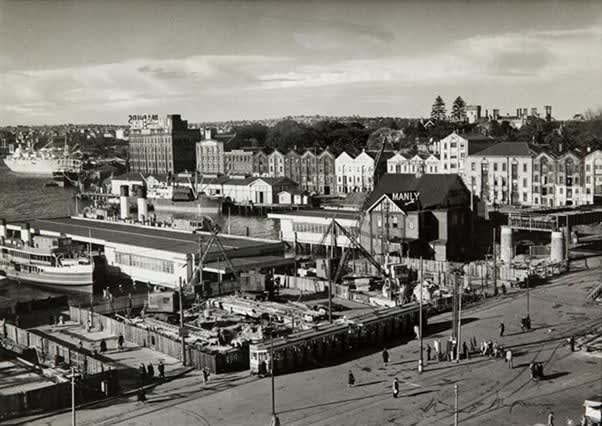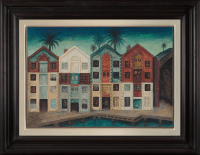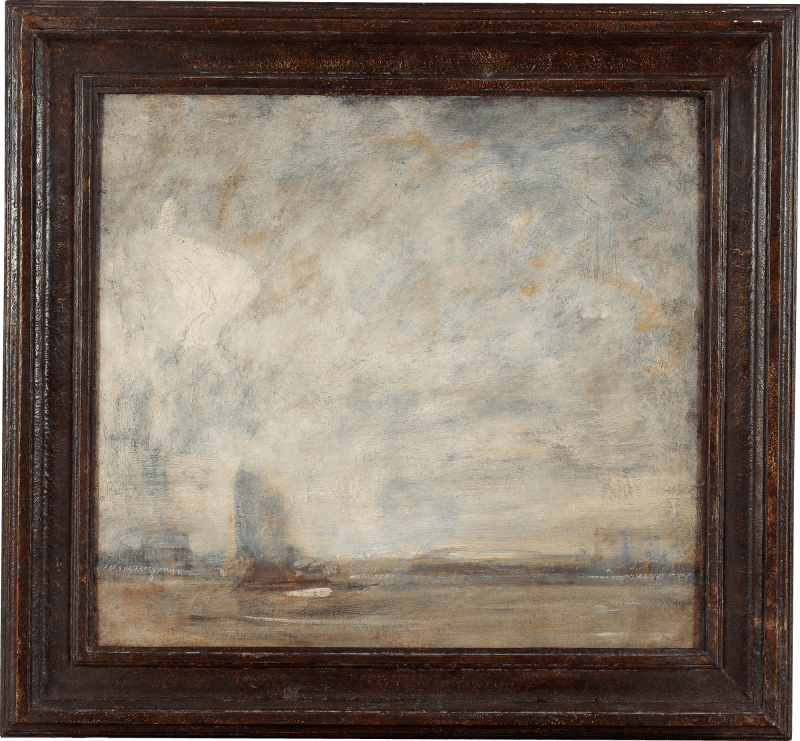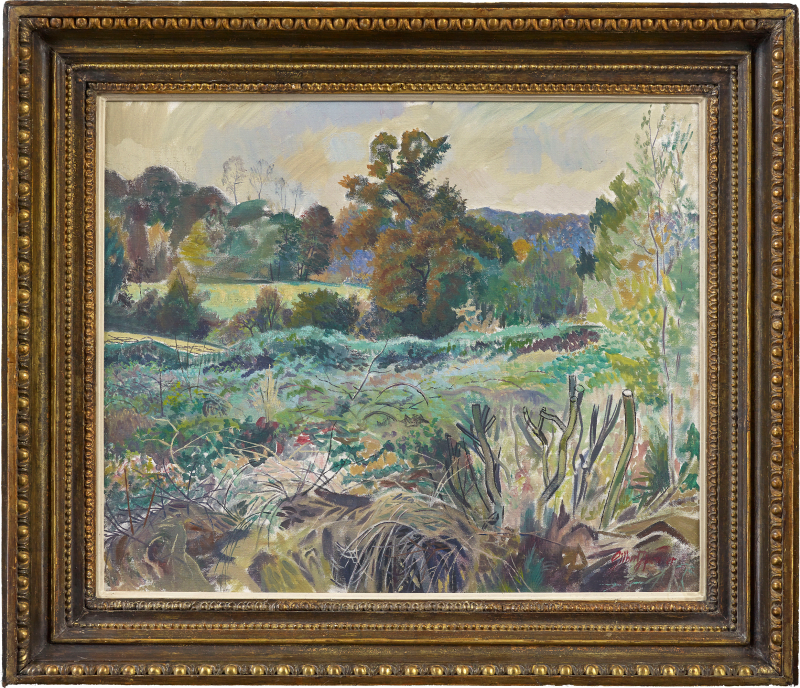Eileen Mayo was a versatile artist and pivotal figure in the art scenes of Australia and New Zealand, celebrated for her versatility across fine art, craft, and printmaking. She began her career in Britain as a model for established artists such as Laura Knight, Dod Procter and Duncan Grant before making a name as an artist in her own right. In Australia, her vibrant linocuts, posters, and illustrations captured the essence of native flora and fauna, elevating public appreciation of Australia's natural heritage. Her teaching and advocacy for accessible art further solidified her legacy, bridging the worlds of fine art and practical design.
Mayo emigrated to Australia in 1952, and later to New Zealand in 1962 where she stayed until her death in 1994. Mayo painted Circular Quay, Sydney after she had moved from Australia to live in New Zealand. This view of Sydney’s iconic waterfront is closely tied to Mayo’s daily ferry journeys between her home in Sydney’s Neutral...
Eileen Mayo was a versatile artist and pivotal figure in the art scenes of Australia and New Zealand, celebrated for her versatility across fine art, craft, and printmaking. She began her career in Britain as a model for established artists such as Laura Knight, Dod Procter and Duncan Grant before making a name as an artist in her own right. In Australia, her vibrant linocuts, posters, and illustrations captured the essence of native flora and fauna, elevating public appreciation of Australia's natural heritage. Her teaching and advocacy for accessible art further solidified her legacy, bridging the worlds of fine art and practical design.
Mayo emigrated to Australia in 1952, and later to New Zealand in 1962 where she stayed until her death in 1994. Mayo painted Circular Quay, Sydney after she had moved from Australia to live in New Zealand. This view of Sydney’s iconic waterfront is closely tied to Mayo’s daily ferry journeys between her home in Sydney’s Neutral Bay and Circular Quay, where she commuted to teach at the National Art School from 1954. The vibrant palette and architectural details capture the spirit of the area as it existed before significant redevelopment [fig. 1]; during the nineteenth century it was a central port for Syndey and later developed as the passenger ferry hub – used by Mayo – but huge redevelopments during the 1950s replaced the warehouses depicted here with the first skyscrapers in Sydney. Today, the quay is home to the Museum of Contemporary Art and neighbours the Sydney Opera House.
Mayo’s focus on architecture and texture bridges her skills as a designer and as a painter. Here, she has married her painting process with techniques that echo her expertise in printmaking, such as the layering of colour and an experimental approach to texture. The soft, grainy finish of the painting reflects her exploration of different tools and methods, as seen in her printmaking practice with foam rollers and light inking. These techniques lend the painting a tactile, almost dreamlike quality, which contrasts with the stark industrial reality of the warehouses themselves. This dreamlike quality is particularly striking given that the work was created from memory, and probably sketches, making it a deeply personal reconstruction of a scene Mayo experienced daily during her time in Sydney, filtered here through the lens of nostalgia. Her depiction captures a moment of transformation in Sydney’s urban and cultural history and preserves the memory of a rapidly changing city.













